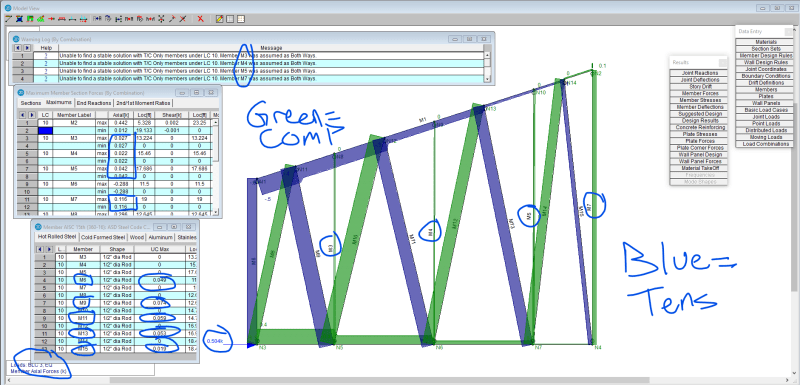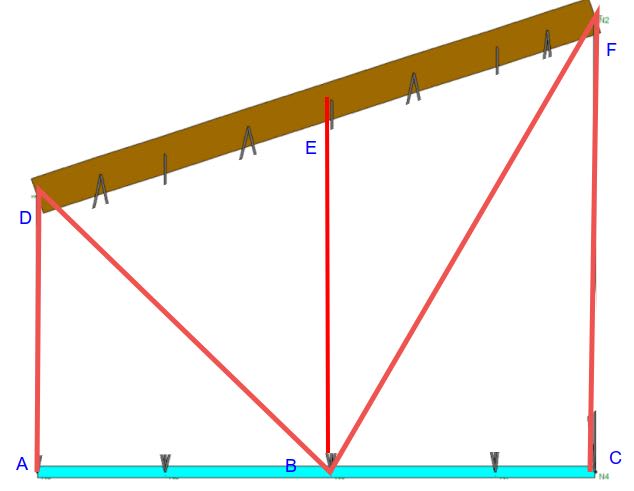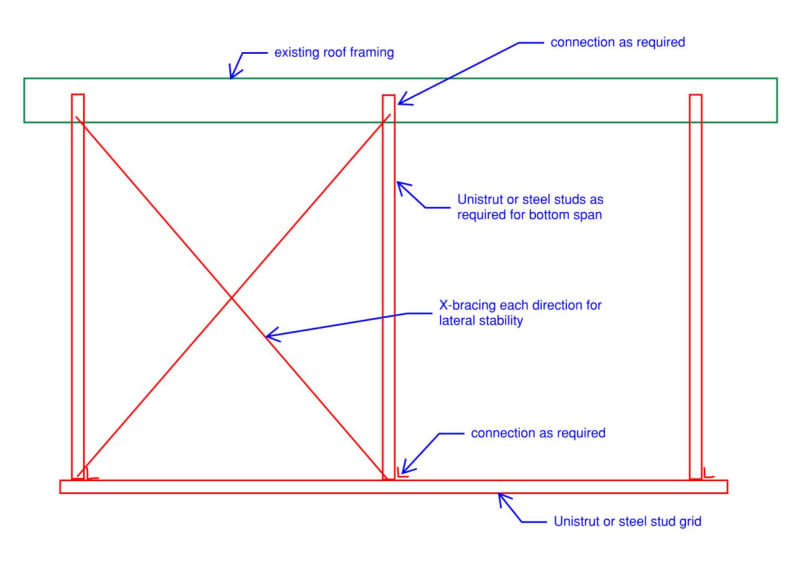Existing commercial one story building with 18" deep TJI joists
Tenant is proposing a suspended soffit/architectural ceiling 7 psf max weight as of now, 300 sq total across two areas. The ceiling is 8 ft above finish floor, and the highest point of the roof is up to 27 ft at the ridge. So a 19 ft vertical suspension at the high point and 11.5 at the low point.
In the past I have done this with tension ties and all thread rods with enough diagonals to limit compression in the rods, but at much shorter suspension heights. Below is a rough schematic of this situation. Appreciate thoughts, guidance, etc. Do kl/r =200 and buckling apply to the rods in this orientation? It is a bit outside of my wheelhouse and I do have a RISA model but can use some help there.


Tenant is proposing a suspended soffit/architectural ceiling 7 psf max weight as of now, 300 sq total across two areas. The ceiling is 8 ft above finish floor, and the highest point of the roof is up to 27 ft at the ridge. So a 19 ft vertical suspension at the high point and 11.5 at the low point.
In the past I have done this with tension ties and all thread rods with enough diagonals to limit compression in the rods, but at much shorter suspension heights. Below is a rough schematic of this situation. Appreciate thoughts, guidance, etc. Do kl/r =200 and buckling apply to the rods in this orientation? It is a bit outside of my wheelhouse and I do have a RISA model but can use some help there.





